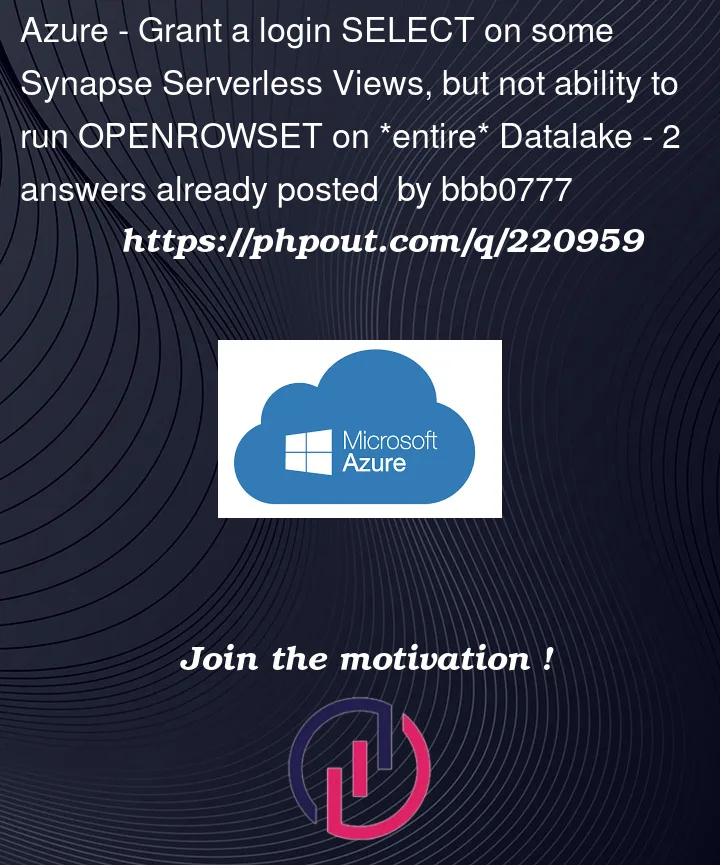For SQL Server based login in Synapse Serverless, as soon as I run these two things:
use master
GO
Create Login JustTest WITH PASSWORD='Whatever'
use somedatabase
Create User JustTest from login JustTest
Now, JustTest can run any OPENROWSET query on the Datalake. Yikes!
For an Azure AD security group based login in Synapse Serverless:
use master
GO
Create login JustADTest FROM EXTERNAL PROVIDER
use somedatabase
Create user JustADTEST from LOGIN JustADTEST
Initially it can’t run any View, even if I do a GRANT SELECT ON. I need to give it access to use OPENROWSET
GRANT REFERENCES ON DATABASE SCOPED CREDENTIAL:: WorkspaceIdentity TO JustADTest
Now it can run the Views I’ve given it access to – as well as OPENROWSET on the entire datalake, same as how the SQLServer based login started.
So how does one do this? It seems like SQLServer logins are completely off limits, and one needs to find a way to give an AD based login limited OPENROWSET usage, but I’m not sure.




2
Answers
There are probably multiple ways to do this, but this is how we ended up solving:
Per this article:
https://www.serverlesssql.com/user-permissions-in-serverless-sql-pools-external-tables-vs-views/#Conclusion
The first - one needs to grant to the security group, so that - in when it selects an object, it can also read the underlying data - which is in the datalake.
The second - then makes sure that the security group cannot run OPENROWSET itself to everything. Note: the second one, needs to be run from master. Use Master; didn't work either - had to select master from the top left dropdown of SSMS.
And the key point - In Synapse Serverless - this only works with External Tables, not Views. If you try that second DENY statement, the user won't be able to select the Views either. Thus, need to use External Tables instead, which will still be available.
The link above goes into more detail.
Another way we almost solved for all this was - removing credentials from the External Data Sources, then going into the Datalake itself and removing/adding rights there. This wasn't compatible with some other things we had setup though.
The below command is giving permission to use scoped credential to user not
OPENROWSET.To use the
OPENROWSETthe database user must haveADMINISTER BULK OPERATIONSpermission.Make sure you create data source According to your requirement with which files should not get fetched from that data source.
The above data source will give access to folder 1 files only.
To restrict user from selecting all the views you can grant permission to the user on particular view. If user does not have select permission on particular view, he will not be able to use SELECT in view.